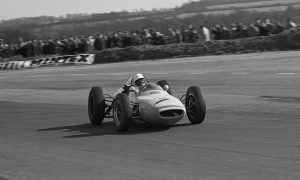
TARGETED DEVELOPMENT FOR 2017?
While F1 teams and their design offices are very much focussed on 2017 and the planned rules revolution, novelties continue to pop up every now and then on the current chassis. This is first of all due to longer manufacturing cycles for midfield outfits like Haas, Manor, and Sauber. Secondly, Singapore was the first in a series of long-haul events taking place far from European-based factories. What’s more, some teams like McLaren continue their development programme in fields they deem relevant for next year.
To some extent, the front wing is one of these areas. Granted, it will gain 15cm in width but the increase is almost proportional to the car’s tracks (+9% for the wing, +11% for the distance between the wheels). This means the wing endplates will more or less continue to line up with the front wheels. While the wider Pirelli tyres will affect the middle section of the front wing, where the all-important Y250 vortex is generated, its new arrow-like shape should not change fundamentally the way it operates.
“It is more a visual change,” Renault chassis technical director Nick Chester told F1i. “Teams will still be trying to achieve something with the front wing – how it works with the wake from the front tyre – but the swept back is not a huge difference.”
The new regulations have not really streamlined the front wing installation, nor limit the number of components it comprises, this despite over-sophistication being part of the reason why F1 drivers struggle to follow another car in front closely. At any rate, the wing example shows it might be a clever option to continue developing the existing concepts instead of starting from a blank canvas.
CONSTANT TWEAKING AT McLAREN
It is in this context that several new front wing specs appeared at Marina Bay Circuit, including a revised McLaren design. We have already mentioned that chief engineer Peter Prodromou has been refining the MP4-31 package by small increments. Already tweaked in Bahrain, Sochi, Barcelona, Montreal, Silverstone, and Budapest, the McLaren front wing was modified once more. The arches that form a sort of funnel on the outer section of the wing have been multiplied, as the second flap now splits into two arcs (compare yellow arrows). The arches are used to create a vortex that fends off the dirty wake coming off the rotating wheels.
The inner section of the front wing, close to the nose, has also been changed. The notch that splits the upper flap into two elements is longer on the Singapore-spec version than on the model used in Budapest, Hockenheim, and Spa. In order to prevent substantial distorting in this crucial area of the front wing, small fins have been added to rigidify the flaps. These changes are aimed at adapting the way the Y250 vortex is generated depending on the venue.







